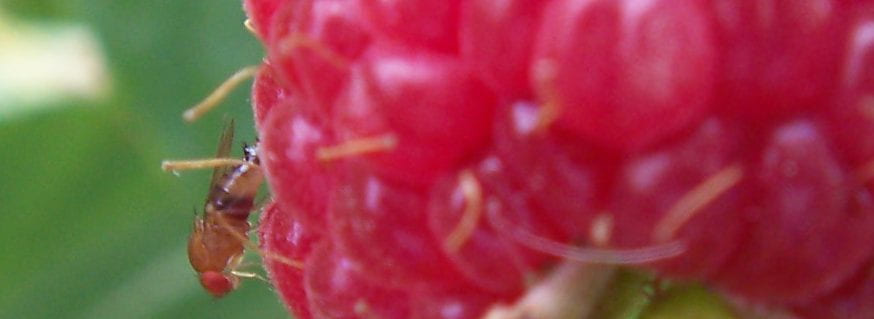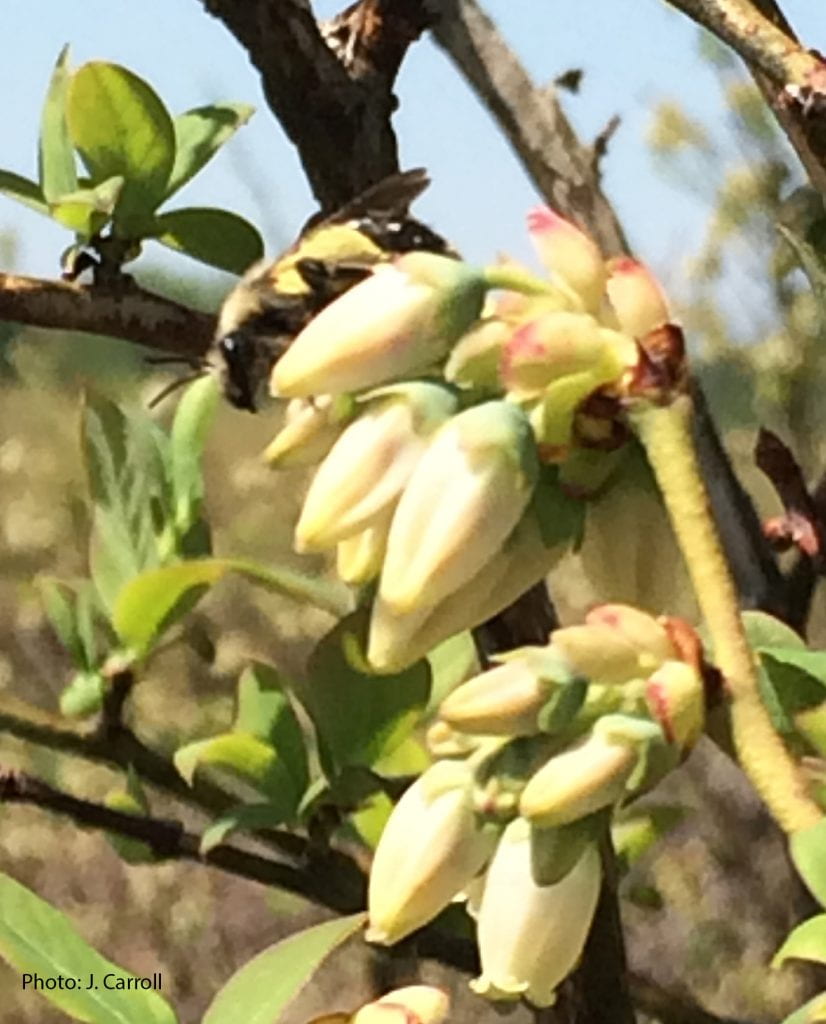Across the state, tart and sweet cherries are approaching harvest and harvests of sweet cherry are underway in Eastern NY. Cherry orchards in western NY have bright red, softening fruit throughout. Bird deterrents for sweet cherries are going out and bird damage was seen. This signals that sweet cherry blocks may be at risk of SWD infestation... if SWD is in the orchard.

Once cherries begin to ripen, starting around first blush, they will become increasingly susceptible to SWD damage, and applications of effective insecticides will be necessary to keep this pest in check through harvest. The SWD insecticide quick guide for stone fruit & grapes has just been revamped for 2021, and is available online here on the SWD Management page of Cornell Fruit Resources.
Spray intervals should be tight, no more than a 7-day interval. Applications should also be reapplied if there is any rainfall. Make sure you rotate the insecticide modes of action (IRAC groups) to prevent insecticide resistance in SWD. Although SWD has been somewhat slow to arrive and build up this year, if your orchard has been troubled by SWD infestation in the past, pay close attention to your insecticide program. When choosing insecticides to manage plum curculio and the cherry fruit flies, select those that are also active against SWD by cross referencing with the SWD insecticide quick guide.
MSU Degree Day Model

To help determine your blocks’ susceptibility and when to begin insecticide treatments, you can use the new MSU degree day model. The model (DD base 4°C BE) predicts cherry fruit ripening (Zavalloni et al. 2006. J Amer. Soc. Hort. Sci. 131: 601-067). The adaptation for SWD, out of Dr. Larry Gut’s and Dr. Nikki Rothwell’s labs at MSU, clocks risk windows for when fruit is soft enough for SWD to lay eggs in it. This model has been field validated for tart cherry and looks promising for sweet cherry, too. It is now available on Enviroweather in Michigan. We can apply it in NY by using the Degree Day Calculator on NEWA. newa.cornell.edu/degree-day-calculator
To clock fruit susceptibility in cherries, degree days (DD) are accumulated starting at the full bloom date. Tart cherries were in full bloom on May 2-3, across much of the Lake Ontario region.
- Low risk – 400 to 529 accumulated DD 4°C BE (no infestation)
- Moderate risk – 530 to 649 accumulated DD 4°C BE
- High risk – 650 to 1000 accumulated DD 4°C BE
Portions of this blog were contributed by Michael Basedow, mrb254@cornell.edu, Eastern NY Commercial Horticulture Tree Fruit Specialist.










